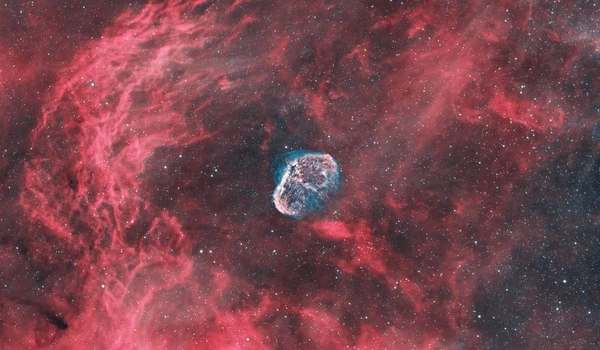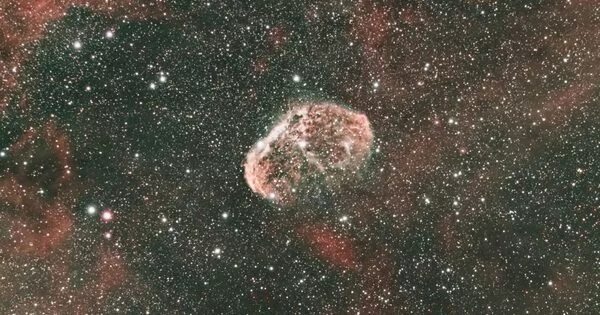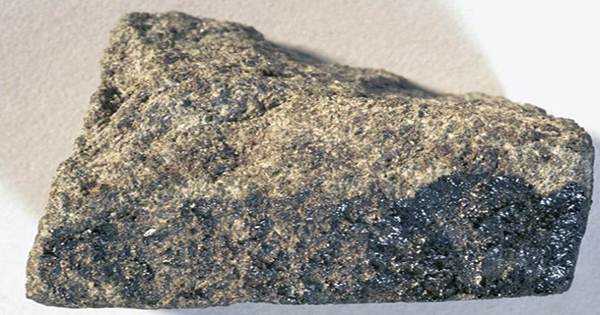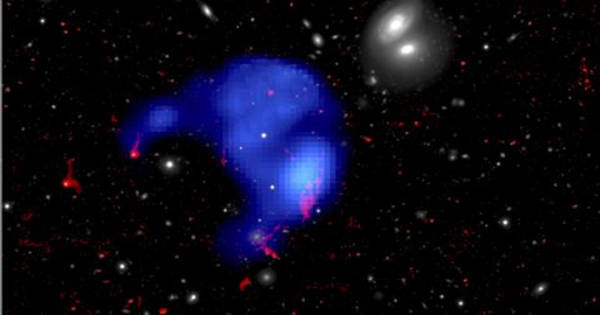The Crescent Nebula is an emission nebula located approximately 5000 light-years from Earth in the constellation Cygnus. It is a striking emission nebula located in the constellation Cygnus. It was discovered in 1792 by William Herschel. It is also known by its catalog numbers NGC 6888 or Caldwell 27. It is approximately 5,000 light-years away from Earth and has a diameter of about 25 light-years.
The nebula is believed to be formed by the fast stellar wind from the Wolf-Rayet star WR 136 colliding with and ionizing the slower moving outer layers of a red giant star. It is formed when the fast stellar wind from the Wolf-Rayet star WR 136 (HD 192163) collides with and energises the slower moving wind ejected by the star when it evolved into a red giant around 250,000 to 400,000 years ago. The collision produces a shell as well as two shock waves, one moving outward and one moving inward. The stellar wind is heated to X-ray-emitting temperatures by the inward moving shock wave.

The Crescent Nebula is estimated to be around 4,700 light-years away from Earth, and it spans about 25 light-years across. It is named after its distinctive crescent or boomerang-like shape, which is believed to be the result of the interaction of the fast and slow stellar winds. It is a faint object located approximately 2 degrees SW of Sadr. To see, most telescopes require a UHC or OIII filter. A telescope as small as 8 cm (with a filter) can see its nebulosity under ideal conditions. Larger telescopes (20 cm or more) reveal the crescent or a Euro sign shape which makes some to call it the “Euro sign nebula”.
The nebula emits light at various wavelengths, including visible light, ultraviolet, and infrared. The visible light emitted by the nebula is mostly due to ionized hydrogen gas, which appears red, while the ultraviolet light is mainly emitted by the hot central star, which is believed to have a surface temperature of around 40,000 Kelvin. The Crescent Nebula is a popular target for astrophotography and amateur astronomers due to its striking appearance and proximity to the bright star Sadr in the constellation Cygnus.
The Crescent Nebula is a popular target for amateur and professional astronomers due to its distinctive shape and striking colors. It can be observed with a small telescope under good viewing conditions, but a larger telescope or astrophotography equipment is needed to see the finer details of the nebula.
















